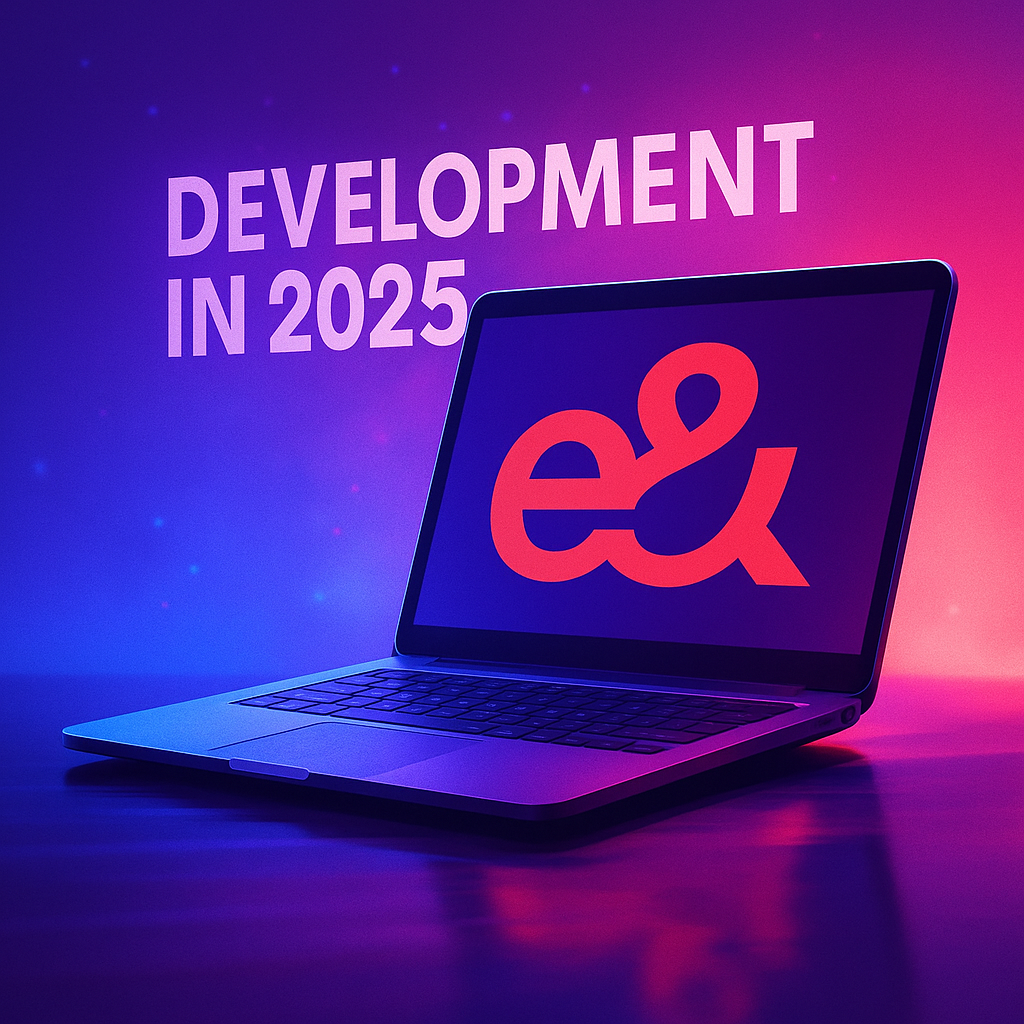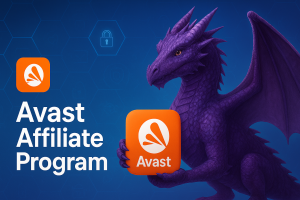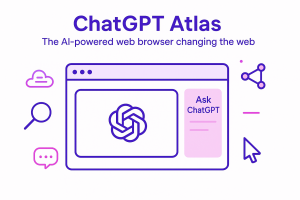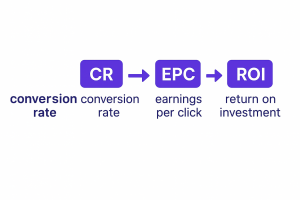In 2025, e& (the group formerly known as Etisalat) continued to evolve from a regional telecom operator into a global technology player. The year saw e& aggressively expand its geographic footprint, invest in infrastructure for artificial intelligence (AI), and scale up digital mobile services. Below, we delve into the key developments in these areas.

Geographic Expansion of the Group in 2025
Opening of a New Telecom Hub in Miami (USA)
In May 2025, e& inaugurated a new strategic telecom hub — e& Wholesale Americas — in Miami, Florida, marking the group’s official entry into the North and Latin American markets. This hub serves as a gateway to the Americas, aimed at addressing the rising demand for connectivity from telecom carriers, enterprise customers, hyperscalers, and AI companies in the US and Latin America. By establishing a presence in Miami’s vibrant tech ecosystem, e& is able to offer partners in the region advanced services such as managed voice, data connectivity, IPX roaming, and mobility solutions. The launch was celebrated with the presence of UAE diplomatic representatives, underlining its significance as a milestone in e&’s international expansion. Building on existing hubs in London and Singapore, the Miami office strengthens e&’s global infrastructure and exemplifies the group’s commitment to “redefining global connectivity” in an era of intelligent, AI-driven networks. Through this hub, e& can more efficiently support American and Latin American operators and digital businesses with low-latency, high-capacity links to its worldwide network.
Planned Hub Launch in Johannesburg (South Africa)
Alongside its U.S. expansion, e& has unveiled plans to establish a new hub in Johannesburg, South Africa. This upcoming African hub is intended to extend e&’s reach into the Sub-Saharan region, providing a crucial point of presence on the African continent. The Johannesburg hub, together with Miami, is part of e&’s strategy to cover high-growth markets globally and will complement existing nodes in Europe, the Middle East, and Asia. By adding a South African gateway, e& aims to better serve African telcos and enterprises with direct access to its international backbone, reducing reliance on third-party transit. The simultaneous investment in Americas and Africa highlights e&’s ambition to be present in all major regions – indeed, with these additions, e&’s operations will span 38 countries worldwide. Strengthening its global footprint through new wholesale hubs not only unlocks previously underserved markets for e&, but also fosters strategic partnerships, positioning the company as a trusted global enabler of digital connectivity in regions that are experiencing rapid digital growth.
Strengthening European Presence via Yettel and O2 Brands
e& significantly bolstered its European presence in late 2024 by acquiring a controlling stake in PPF Telecom Group’s telecommunications assets across Central and Eastern Europe. This landmark transaction (a 50% + 1 share partnership) brought e& into four new European markets – Bulgaria, Hungary, Serbia, and Slovakia – expanding the group’s footprint to a total of 38 countries. In these markets, e& now operates the mobile networks formerly under PPF, including the Yettel brand in Bulgaria, Hungary, and Serbia, and O2 in Slovakia. The acquisition instantly added roughly 13 million subscribers and robust infrastructure in Europe, contributing to e&’s global subscriber base of about 195 million as of Q1 2025. e&’s Carrier & Wholesale division played a critical role in integrating these operations by ensuring seamless international connectivity and service continuity across the new European subsidiaries. This move not only gives e& a strong entry into EU markets but also provides synergies such as access to advanced EU telecom expertise and the opportunity to cross-leverage digital services. The European expansion through Yettel and O2 aligns with e&’s vision of becoming a global techco – shifting from a primarily Middle Eastern operator to an international group with diversified markets. It allows e& to participate in the EU telecom arena and leverage scale in areas like procurement, roaming agreements, and technology deployment (for example, sharing innovations in 5G and network automation across its global operations).
Raising Vodafone Stake to 15% and Its Strategic Significance

Continuing its outward investment strategy, e& has also deepened its ties with global operator Vodafone Group. By September 2024, e& increased its shareholding in Vodafone to 15.01%, up from an initial 9.8% stake acquired in 2022. This move established e& as Vodafone’s largest shareholder and led to a formal strategic partnership between the two companies. Under a May 2023 relationship agreement, e& was recognized as a cornerstone investor in Vodafone, granting e& a seat on Vodafone’s board and the potential to nominate a second director if its stake exceeds 20%. More importantly, the partnership outlines multiple areas of collaboration. e& and Vodafone agreed to jointly explore cross-border digital services for enterprise customers and public sector clients, combining their strengths in fixed and mobile connectivity, IoT, cybersecurity, cloud, and other solutions. They also plan to cooperate in procurement, aiming to leverage their collective scale for cost efficiencies, and to work together in carrier and roaming services to provide high-quality international infrastructure. Additionally, their technology teams will collaborate on future network evolution, including the adoption of Open RAN and other innovative network architectures. E&’s Group CEO Hatem Dowidar has stated that the investment in Vodafone is anchored in Vodafone’s global industry position and aligns with e&’s vision of becoming a worldwide telecom & tech player. For e&, this partnership is strategic: it opens opportunities to expand into new markets through association with Vodafone, allows knowledge transfer and synergy (for instance, joint product offerings across Europe, Middle East, and Africa), and potentially gives e& influence in Vodafone’s strategic direction. In essence, raising the Vodafone stake and forging a closer alliance has been a key pillar of e&’s international strategy – facilitating growth beyond its home markets and creating a bridge between its strong Middle East/Africa base and Vodafone’s extensive European footprint.
Development of AI Infrastructure
Empowering AI Companies and Hyperscalers via the Global Network

As artificial intelligence becomes a core driver of digital services, e& is positioning its infrastructure to support the needs of AI companies and cloud hyperscalers. The group’s global network – spanning submarine cables, international fiber routes, and interconnection hubs – is being leveraged to serve the bandwidth and latency requirements of major tech players including Microsoft, Amazon Web Services (AWS), Google, and OpenAI. The newly opened Miami hub is a case in point: it is geared to serve the rising demand from hyperscalers and AI players in addition to telcos and enterprises. With this expansion, e&’s Carrier & Wholesale arm positions itself as a one-stop-shop for companies seeking worldwide connectivity for data-intensive applications. It offers a single entry point for global reach, meaning cloud providers, AI startups, and content delivery networks can connect to e&’s platform to instantly access users and edge nodes across e&’s 38-country footprint. Moreover, e& is integrating AI-driven automation into its network services, allowing dynamic adjustments and intelligent routing to meet the needs of AI applications in real time. For example, e& highlights that its robust ecosystem – spanning subsea cables, AI-powered platforms, and localized expertise – enables partners to scale with agility and confidence in a hyperconnected world. In practice, this means an AI company can rely on e& to distribute its services (such as machine learning model APIs or cognitive assistants) closer to end-users via e&’s global nodes, ensuring speed and reliability. The group has reported success in attracting non-telco clients onto its wholesale network, including enterprises in the technology sector, hyperscale cloud providers, and AI-driven platforms. This broadening of the customer base beyond traditional telecom reflects e&’s evolution into a digital infrastructure provider for the new AI and cloud era. By aligning network offerings with the needs of AI, cloud, and edge computing, e& is aiming to be a key enabler of the AI ecosystem, similar to how major carriers support the internet giants.
Role of Data Centers and Telecom Backbone in Fast AI Service Delivery
High-performance data centers and fast telecom channels are at the heart of delivering AI services with minimal latency. e& recognizes that AI applications – from real-time language translation to autonomous vehicle coordination – require the rapid movement of large datasets and inference results across the globe. To meet these demands, e& has been investing in its SmartHub data centers and international backbone. Its infrastructure includes multiple carrier-neutral data centers in the UAE (e.g., in Fujairah and Kalba) interconnected by high-capacity submarine cables to Europe, Asia, and Africa. Additionally, with new hubs in Miami and planned in Johannesburg, e& is creating more regional points for data exchange. The advantage of this distributed infrastructure is that AI service providers can host or cache their applications closer to end-users, thereby reducing round-trip time. For instance, an AI-driven content recommendation engine hosted in an e& data center in the Middle East can swiftly serve users in that region without relying on distant European or US servers. The telecom backbone of e& – comprising fiber routes and peering agreements – ensures that once data leaves a data center, it travels along optimized paths to its destination. e& emphasizes a “seamless, secure, and intelligent connectivity” approach: using AI to optimize network routes and applying stringent security for data in transit. In concrete terms, e&’s network can differentiate and prioritize traffic for latency-sensitive AI tasks (like an interactive voice assistant query) over less critical flows, ensuring timely responses. The group’s commitment to digital infrastructure upgrades, such as deploying edge computing nodes at key network locations, further supports AI workloads by processing data closer to where it’s generated (reducing the distance data must travel). Moreover, through partnerships with cloud providers like AWS, e& is integrating cloud services with its telecom network – for example, using AWS Outposts or local zones in e& facilities, which give AI developers the cloud computing power within e&’s local network environment. This synergy of data centers, cloud, and connectivity means that AI services can be delivered to end-users faster and more reliably. The high throughput of e&’s links also allows large-scale AI model training data to be moved between continents efficiently, which is essential for global AI collaborations. In summary, e&’s telecom channels and data centers form the digital highways and hubs that allow AI services to reach users swiftly, making the promise of real-time AI (like instantaneous translation, smart city sensors, or cloud gaming) closer to reality.
What is “AI Roaming” and Why is It Needed?

“AI roaming” is an emerging concept inspired by the idea of mobile roaming, but applied to AI services. In telecommunications, roaming allows a user’s mobile phone to seamlessly connect to another operator’s network when traveling abroad, so the service continues uninterrupted. By analogy, AI roaming refers to the ability of AI-powered services or agents to operate seamlessly across different network environments and geographic regions without interruption or reconfiguration.
Consider a scenario where a user has an AI virtual assistant that provides real-time information and analysis. If the user travels from the Middle East to Europe, AI roaming would ensure that the assistant’s service remains as responsive and available as it was at home, despite the change in location. Practically, this could mean the AI workload or instance “roams” to a nearer computing center – for example, transferring the session from a Dubai data center to a London data center once the user is in Europe – all done automatically and invisibly to the user. The result is low latency and high performance maintained globally.
Another aspect of AI roaming is regulatory and data governance: as data or AI computations cross borders, they may need to roam to environments compliant with local laws. For instance, an AI service might roam from a US cloud region to an EU-based cloud region when servicing an EU user, to comply with data residency requirements. From e&’s perspective, enabling AI roaming is about leveraging its global network and partnerships so that AI services can be delivered from optimal locations. With its presence in 38 countries and connectivity agreements beyond, e& can facilitate AI roaming by dynamically routing requests to the closest AI processing node in its network.
The need for AI roaming arises from the demand for ubiquitous AI experiences. Modern AI applications like augmented reality, autonomous drones, or language translation need to function in real time, wherever the user or device is located. If an autonomous vehicle that uses an AI model trained in one country drives into another, AI roaming would allow it to seamlessly fetch updates or compute decisions via the new region’s infrastructure without losing precious milliseconds. Similarly, an enterprise analytics platform should provide consistent results to a multinational company’s offices worldwide, by roaming its AI computation across cloud zones for efficiency.
In essence, AI roaming ensures that AI services are not tied to a single server or data center but can move across the network to remain as close as possible to the end-user or data source. This is crucial for minimizing latency (critical for voice interfaces, gaming, etc.), improving reliability (the service can switch to a backup region if one goes down), and optimizing resource use (loading different servers during off-peak hours). It also enhances user experience – the transition is invisible; the user doesn’t know that behind the scenes their AI queries might be answered in different parts of the world as they travel.
e&’s global network, intercontinental hubs, and AI partnerships uniquely position it to implement AI roaming. By coordinating with hyperscalers’ distributed cloud services and potentially deploying its own AI at network edges, e& can enable a future where an AI algorithm “roams” just like a phone call, ensuring that regardless of where the request comes from, it is handled in the best location. AI roaming is needed to make AI truly pervasive and on-demand globally – it’s about breaking the location barriers for AI computations, just as mobile roaming broke the barriers for voice and data communication worldwide. As AI services become more ingrained in daily life, the importance of AI roaming grows, because users will expect their smart assistants, AI-driven apps, and intelligent devices to work flawlessly wherever they go, a capability that only a globally integrated network can provide.
MVAS (Mobile Value-Added Services)
Scaling Subscription and Content Services in Middle East, Africa, and Asia
Another cornerstone of e&’s development in 2025 has been the expansion of mobile value-added services (MVAS) – i.e., subscription-based digital services offered over mobile networks. The group leverages its extensive presence across the Middle East, Africa, and Asia to roll out and scale these services regionally. Through its consumer services arm (branded as e& life) and local operating companies, e& provides subscribers with a rich array of digital offerings that go beyond traditional voice and data. These include streaming entertainment platforms, music and video subscriptions, mobile gaming portals, digital news and education services, as well as fintech solutions like mobile wallets and insurance, and even m-health (mobile health) applications. The strategy is to create a digital ecosystem around the mobile user, thereby increasing engagement and opening new revenue streams. Since rebranding in 2022, e& has explicitly aimed to transform from a pure telecom operator into a techco, expanding into domains such as cloud computing, AI, cybersecurity, fintech, media, and enterprise services. This transformation underpins the MVAS expansion: for example, e& has invested in a majority stake in the regional video streaming service StarzPlay Arabia and integrated it with its telecom offerings, launched its own digital fintech products like e& money in the UAE, and partnered with content providers to enrich its platform. By tailoring services to local tastes and languages (think Islamic content subscriptions in Muslim-majority markets, or sports and music content popular in African markets), e& can achieve rapid user uptake. The group’s vast subscriber base (over 194 million globally) gives it an advantage to scale services quickly once they find a product-market fit. In summary, e& is scaling its subscription and content services across MEA and Asia by leveraging acquisitions, partnerships, and in-house innovation – all aimed at increasing the digital engagement of its mobile customers and diversifying its revenue beyond core connectivity.
Examples of MVAS in Various Markets
To illustrate the range of MVAS under e& across different regions, here are a few country-specific examples from the group’s footprint:
- Afghanistan: Etisalat Afghanistan (the e& operation in Afghanistan) offers its subscribers a variety of localized VAS. For instance, it provides an Islamic content service that delivers religious teachings and insights via mobile, catering to the cultural context. It also has a Doctor on Call service for telemedicine, allowing customers to consult doctors remotely – a valuable offering in a country with challenging geography. A Gaming Club subscription gives users access to premium mobile games, while utility services like Voice & Data Loan allow customers to borrow airtime or data when they run out, ensuring connectivity during emergencies. Popular traditional VAS like Call Ring Back Tones (CRBT) let users set up music or tones for callers to hear before the call connects. Additionally, SMS-based info services (news, sports updates via a Sports SMS portal) and educational content (e.g. the Ganjina portal for kids with cartoons and learning materials) are on offer. These services, delivered via basic SMS/IVR as well as smartphone apps, have helped Etisalat Afghanistan increase customer engagement and generate incremental ARPU in a market where mobile data usage is still growing. They also provide practical benefits – for example, the credit loan service ensures people can stay connected even with zero balance, fostering loyalty to the network.
- Egypt: Etisalat Misr (now branded as e& Egypt) has been a frontrunner in launching digital content and mobile financial services in the country. A notable example is the introduction of Etisalat TV, a streaming platform launched in partnership with E-Vision (e&’s content subsidiary) and regional content providers. Etisalat TV offers over 109 live TV channels and 13,000 hours of on-demand video content to subscribers, available on smartphones and smart TVs. This service, launched around 2020, gave Etisalat Egypt a competitive edge in the booming streaming market by bundling content subscriptions with its data plans. On the financial side, Etisalat Misr operates a mobile wallet service known as e& Cash (formerly Etisalat Cash), which allows customers to use their phone for a range of transactions: peer-to-peer money transfers, bill payments, topping up mobile credit, and even receiving salaries or government disbursements into their wallet. The wallet can be accessed via a mobile app or USSD, making it inclusive for both smartphone and basic phone users. Such MVAS have been crucial in Egypt’s shift towards a cashless economy; for example, e& Cash enables users to send money to any other wallet or bank account in Egypt instantly, and to pay merchants by scanning QR codes – all without needing a traditional bank account. Other MVAS in Egypt include music streaming (Etisalat Music), gaming subscriptions, and digital marketplace services where customers can purchase apps or digital goods and charge them to their mobile bill. By localizing content (lots of Arabic movies, local TV series on Etisalat TV) and addressing everyday needs (like easy mobile payments), e& Egypt has achieved strong uptake of its MVAS, which helps differentiate its brand in a highly competitive telecom market.
- Nigeria: Although e& no longer directly operates in Nigeria (Etisalat Nigeria was rebranded to 9mobile in 2017 after e& exited), it’s worth mentioning a pioneering MVAS initiative from the group’s history in Nigeria. In 2012, Etisalat Nigeria launched “Easywallet”, one of the country’s first comprehensive mobile wallet services. What made Easywallet innovative was that it was a SIM toolkit application pre-installed on SIM cards, making it accessible even on basic GSM phones (not just smartphones). It supported multiple local languages (English, Hausa, Igbo, Yoruba) and allowed users to perform a wide range of financial transactions securely right from their phone menu. Through Easywallet, millions of previously unbanked Nigerians could for the first time: pay utility bills, buy goods/services, transfer money to family, receive funds, withdraw cash at agents, and top-up airtime digitally. The service worked in partnership with leading banks and was designed with strong encryption and PIN security to protect transactions. The impact was significant – with Nigeria’s population over 180 million (as of that time) and low formal banking penetration, Easywallet demonstrated how mobile operators could drive financial inclusion. The platform was recognized globally, winning the GSMA’s “Best Mobile Money Innovation” award, highlighting its importance in bringing secure financial services to millions for the first time. Although Etisalat Nigeria faced financial challenges later and was restructured as 9mobile, the legacy of Easywallet lives on, as 9mobile and other Nigerian operators continue to build on the mobile money ecosystem it helped initiate. This example underscores how MVAS can be transformational in emerging markets – turning the mobile phone into a tool for economic empowerment.
The Role of MVAS in Monetization and Digital Transformation
Mobile VAS have become a critical component of e&’s business model, contributing to both monetization and the broader digitalization of its markets. From a monetization perspective, MVAS provide new revenue streams beyond voice and data. They help increase ARPU (Average Revenue Per User) by encouraging subscribers to spend on additional services – be it a streaming subscription, a premium gaming pass, or transaction fees from mobile payments. This is particularly important as traditional voice/SMS revenues decline industry-wide; digital services help offset that. e&’s financial reports illustrate the growing impact of digital services: for instance, in Q1 2025 the company saw substantial gains in its digital platform metrics – its e& money mobile wallet’s transaction volume tripled, its streaming platform (STARZ ON, formerly StarzPlay) reached 1.44 million users, and the gross transaction value on the Careem super-app (in which e& has a stake) grew 177% year-over-year. These figures indicate not only the popularity of MVAS among consumers but also their potential for revenue generation and value creation for the group. Furthermore, MVAS can improve customer stickiness; a subscriber using multiple services (telecom + entertainment + finance) is less likely to churn to a competitor, thereby improving lifetime value.
Beyond direct revenue, MVAS play a strategic role in advancing digital transformation in the regions where e& operates. By introducing services like mobile banking, e-learning, or telehealth via the ubiquitous mobile phone, e& helps leapfrog some infrastructural gaps in emerging markets. For example, in countries with remote areas lacking banks, a mobile wallet service effectively brings financial services to people’s hands (as seen in Egypt, Nigeria, etc.). In places with limited educational resources, mobile education or informational VAS can disseminate knowledge widely. Each of these services accelerates the adoption of digital habits among the population – people become more comfortable with smartphones, apps, and online transactions. That in turn drives demand for better connectivity, creating a virtuous cycle for e&’s core telecom business as well.
Another important aspect is that e&’s MVAS strategy often involves partnerships and ecosystem-building. For instance, to offer mobile health consultations, e& might partner with healthcare startups; to enrich its content offerings, it partners with local TV networks and global content providers (like Starz, MBC, etc.). These collaborations not only enhance the service quality but also integrate e& into the larger digital economy of each country. This positions e& as a digital hub in its markets – not just a pipeline for data, but a platform where various digital services converge.
From a societal perspective, MVAS contribute to digital inclusion. As inexpensive VAS accessible via basic phones (e.g., SMS information services, mobile agriculture tips for farmers, etc.) are rolled out, they ensure that even those without expensive devices or high incomes can benefit from the digital revolution. e& has, for instance, services like Mobile Academy in some Asian markets which send educational snippets via SMS, or religious content services that send daily prayers – these might not be huge money-makers, but they build goodwill, fulfill local needs, and bring more users into the digital fold.
In summary, MVAS for e& serve a dual purpose: they are engines of growth and diversification for the company’s finances, and they are catalysts for broader digital adoption in its operating countries. By 2025, e&’s emphasis on services like streaming media, mobile financial services, and digital content is clearly paying off in terms of user numbers and engagement. The strategy aligns with global trends of telecom operators reinventing themselves as digital service providers. e&’s approach, executed across a diverse footprint from the Middle East to Africa and Asia, showcases how offering the “next billion” users compelling mobile services can simultaneously be a profitable venture and a driver of digital progress. As e& moves forward, MVAS will likely remain central to its mission – enriching customers’ daily lives digitally (“make possible more than just telecom”), and in doing so, secure its position as a leading digital telco of the emerging markets.



















































